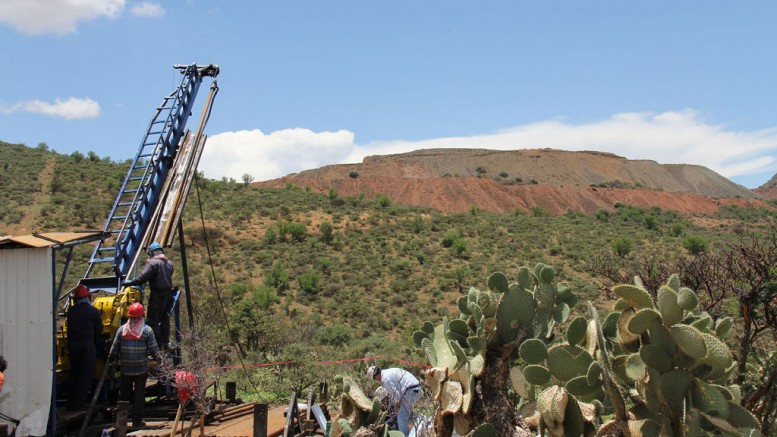The start of commercial production at Avino Silver & Gold Mines’ (TSXV: ASM; NYSE: ASM) Avino ET mine — the second and largest mine on the company’s Avino property in Mexico — signals better times ahead for the junior precious metals producer.
The Avino ET mine, 82 km northeast of Durango, moved into commercial production on April 1, after a 19-month advancement and test period and produced 341,521 silver-equivalent ounces in the second quarter of this year.
Folding in production of another 288,259 silver-equivalent oz. from the company’s high-grade San Gonzalo mine — which started commercial production in 2012 about 2 km northeast of the Avino ET mine — brings the company’s total production in the three months ended June 30 to 629,780 silver-equivalent oz.
The company forecasts it will produce between 2.8 million and 3 million silver-equivalent ounces at its operations in Mexico this year and is confident it will hit other key milestones in the near future.
“Stay tuned. We’ve got a lot of good news coming up, so keep an eye on us,” president and CEO David Wolfin said during the Q&A portion of a conference call earlier this month, adding that he does not see silver demand “slowing down any time in the future.”
“People are concerned about what’s happening in the world and are loading up” on the metal, he said.
Wolfin was travelling and unavailable for an interview with The Northern Miner before this article went to press.
Rob Chang of Cantor Fitzgerald raised his target price on Avino by 13% from $3.85 per share to $4.35 per share after the company reported its financial results on August 15.
Results for the quarter were mixed. While revenues from sale concentrates rose 102% year-on-year to $11.9 million, the company posted an after-tax loss of $450,087 compared with net income of $361,000 in the second quarter of 2015.
Consolidated all-in sustaining costs came in at US$11.27 per payable silver-equivalent ounce, a 23.8% increase from the US$9.53 per oz. in the second quarter of 2015.
Lower revenue and production (629,780 silver-equivalent oz. compared with the year-earlier quarter’s 819,300 silver-equivalent oz.) were attributed to maintenance time on a ball mill in circuit 3 (the bearings had to be replaced) and lower grade material from the stockpile at the San Gonzalo operation, which Chang notes “are not expected to occur” in the third quarter of the year.
The company ended the quarter with cash and equivalents of $10.7 million.
Earlier this month, Avino started construction of a new tailings storage facility that will cover 21 hectares and have the capacity to store 7.5 million tons of wet tailings. It will be built in four stages. The first two stages, which will take about six months to finish at an estimated cost of US$2.2 million, will provide enough storage capacity for six years. Stages three and four, which can be built at any time and cost a further US$624,000, will provide enough storage for an additional eight years of operations. The company has environmental permits for fourteen years of operations and an additional 11 years post-production.
Once the new tailings storage facility is ready, Avino will decommission the existing facility, which will enable management to start to assess the upper sulphide bench and the lower oxide bench in areas that are currently being used to store tailings.
Open pit and underground mining of the Avino vein between 1968 and 2001 left behind a large tailings resource that Avino is continuing to analyze for re-processing. The resource includes both oxide and sulphide tailings, each requiring separate treatment methods. The company believes that advances in heap leach technology and improving metals markets will enable Avino to potentially process the gold and silver in the tailings.
The company — set up in 1968 — was one of the first foreign-owned junior mining companies to enter Mexico and previously operated the Avino mine under partnership for 27 years. It acquired full control of the mine in 2006, after Mexico changed its laws to allow 100% foreign ownership of mines.
Under an agreement with Samsung, Avino will sell silver concentrates on an exclusive basis until July 2018.
Over the last year the junior’s shares have traded in a range of $1.03 and $3.09 and at press time were changing hands for $2.84 apiece. The company has a market cap of about $126.4 million.


Be the first to comment on "Avino Silver & Gold hits milestones in Durango"